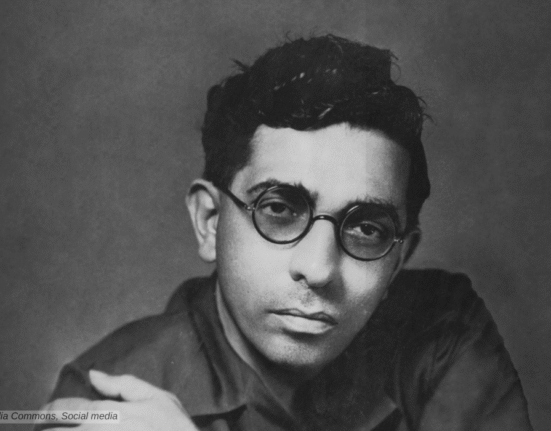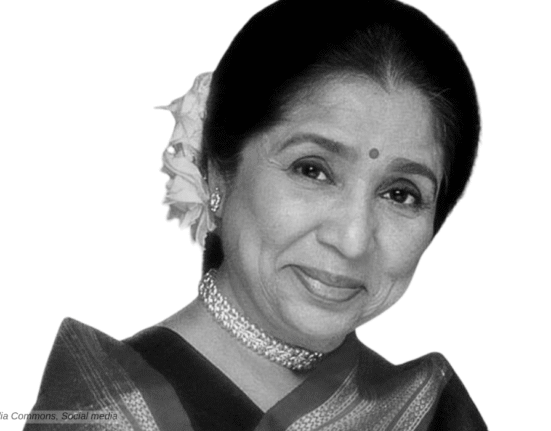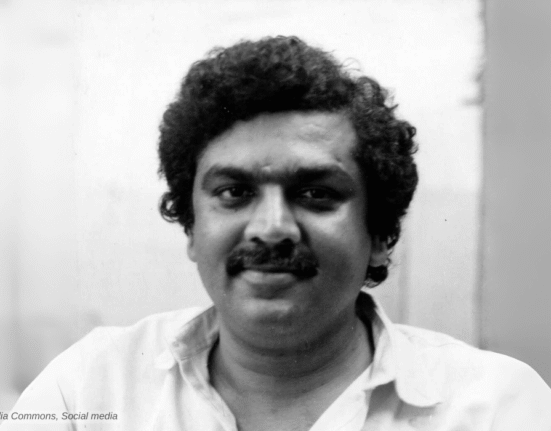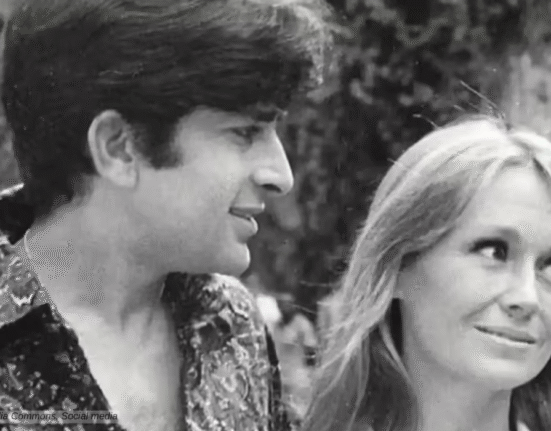Smita Patil remains one of the most beloved and respected film personalities even 39 years after her death. Her journey from a television newsreader to one of the most celebrated actresses in Indian film history is a tale of talent, determination, and passion for the craft of acting. Some of her iconic films include “Bhumika, “Manthan,” “Arth,” “Bazaar,” “Mandi,” “Namak Halal,” “Shakti,” and many more.
Early Life
Smita Patil, born on October 17, 1955, in Pune, Maharashtra, was a tour de force in Indian cinema. She was the daughter of Shivajirao Girdhar Patil, an Indian social activist and politician and Vidyatai Patil, a nurse and a famous social worker.
Patil gets her early education at the Renuka Swaroop Memorial School in Pune before going to Bombay University, Maharashtra, where she studied literature. She later graduated from the Film and Television Institute of India (FTII), Pune, which laid the foundation for her illustrious career in films.
Her journey in acting began during her college days, where she was actively involved in the local theatre scene. This experience in theatre provided Patil with a robust foundation in acting, which she later translated into her powerful screen performances. Patil continue to do theatre during her time at the Film and Television Institute of India (FTII)
Debut and Breakthrough

Smita Patil began her career in the early 1970s as a television newsreader on Mumbai Doordarshan. Her first acting role was in the FTII student film “Teevra Madhyam,” directed by Arun Khopkar, which led to her discovery by acclaimed filmmaker Shyam Benegal, who cast her in his 1975 children’s film Charandas Chor, based on Habib Tanvir’s play, which was an adaptation of a Rajasthani folktale by Vijaydan Detha.
Patil made her film debut with Shyam Benegal‘s Charandas Chor (1975). The same year she made her Marathi debut with “Samna,” directed by Jabbar Patel and written by the acclaimed playwright Vijay Tendulkar, followed by Shyam Benegal’s “Nishant.”
Both films saw her playing a supporting role, which was praised widely. Soon she got her first big lead role in “Manthan (1976),” in which she played a Gujarati village woman. The film tells the story of White Revolution of Verghese Kurien, which led to the establishment of the milk cooperatives in Anand, Gujarat.
Smita Patil The Powerhouse of Talent
Her best-known role came early in her career. Benegal’s “Bhumika (1977)” was the bigraphical movie based on the life and struggle of celebrated Marathi actress “Hansa Wadkar.” The film based on Hansa Wadkar’s autobiography Sangtye Aika. In the film, Patil took on the challenging role of an actress struggling with her identity, a performance that won her the National Film Award for Best Actress. This film was a landmark in her career, showcasing her ability to delve deep into the psyche of her characters. Same year she also won the Filmfare Award for Best Actress Marathi for her role in Jabbar Patel’s “Jai Re Jait.”
In 1978, she acted in Shyam Benegal’s Telugu/Hindi bilingual “Anugraham/Kondura (1977),” followed by Muzaffar Ali’s “Gaman,” with Farooq Sheikh and Nana Patekar, which deals with the issue of the futility of urban migration. In a career that would span just over a decade, Smita left an indelible mark on Indian cinema, which made her the leading figure of the New Wave movement in Indian cinema.
She then acted in Khwaja Ahmad Abbas’s “The Naxalites (1980),” Govind Nihalani‘s “Aakrosh (1980),” Saeed Akhtar Mirza’s “Albert Pinto Ko Gussa Kyon Aata Hai (1980),” Satyajit Ray’s adaptation of Premchand’s short story “Sadgati (1981),” Ketan Mehta’s “Bhavani Bhavai (1981),” Mahesh Bhatt’s “Arth (1982),” Jabbar Patel’s “Umbartha (1982),” Govind Nihalani’s “Ardh Satya (1982),” T. S. Nagabharana’s “Anveshane (1983),” Deven Verma‘s “Chatpati (1983),” G. Aravindan’s “Chidambaram‘ (Malayalam, 1985),” and many more.
Smita Patil The Mesmerizer
In 1980, she was cast by Mrinal Sen in an Indo-Bangladesh co-production, “Akaler Sandhane,” which translates to ‘In Search of Famine’, was a meta-cinema narrative that won the Silver Bear Special Jury Prize at the 31st Berlin International Film Festival. “Chakra (1981)” was another milestone in Patil’s career, where she played a slum dweller fighting for survival in the harsh realities of urban poverty. This role earned her a second National Film Award and her first Filmfare Award for Best Actress.


“Chakra (1981)” was another milestone in Patil’s career, where she played a slum dweller fighting for survival in the harsh realities of urban poverty. This role earned her a second National Film Award and her first Filmfare Award for Best Actress.
In 1982 came Sagar Sarhadi’s classic “Bazaar,” where Patil delivered a nuanced performance as Najma, a young woman caught in the web of Hyderabad’s bride market. The film’s critical look at the commodification of women resonated with Patil’s own feminist ideals.
In Shyam Benegal’s “Mandi (1983),” based on Khwaja Ghulam Abbas’s short story “Anandi,” she was part of an ensemble cast. She delivered a powerful performance as the nautch girl Zeenat. The film highlighted the hypocrisy and plight of women in a patriarchal society.
One of her most celebrated films was Ketan Mehta’s “Mirch Masala (1985),” which saw her in one of her most iconic roles, as a feisty village woman standing up against oppression.

Smita Patil Conquered The Commercial
While Patil is often celebrated for her roles in films that were part of the New Wave cinema in India. But her appearances in commercial movies revealed a different facet of her acting prowess. She was able to bring depth to characters in commercial films, often elevating the narrative with her nuanced performances.
One of her most notable commercial successes was “Namak Halaal (1982),” where she starred opposite Amitabh Bachchan. Her performance in “Shakti (1982),” another mainstream film, saw her sharing screen space with veteran actors like Dilip Kumar and Amitabh Bachchan, further cementing her status as a versatile actress who could transition between art and commercial cinema with ease.
Patil’s role in Aaj Ki Awaaz (1984) is another example of her commercial cinema endeavors. The film dealt with the theme of vigilantism, and Patil’s character was central to the plot, showcasing her ability to adapt to the demands of mainstream storytelling. In “Amrit (1986),” she played a supporting role, but her character left a lasting impression on the audience, demonstrating her skill in bringing authenticity to every part she played, regardless of the screen time.
Some of her other mainstream films include Kasam Paida Karne Wale Ki (1984), Meraa Ghar Mere Bachche (1985), Aakhir Kyon? (1985), Kaanch Ki Deewar (1986), Dilwaala (1986), Anokha Rishta (1986), Dahleez (1986), and many more.
Personal Life
Beyond the silver screen, Patil was a staunch feminist and an active member of the Women’s Centre in Mumbai. She advocated for women’s rights and was a voice for the empowerment of women, a cause she deeply cared about. Her commitment to social issues was not just lip service. She lived her beliefs, choosing roles that reflected her stance on women’s issues.
Patil fall in love with actor Raj Babbar, they married in mid 1980s. Their union was not without controversy, given Babbar’s previous marriage. The couple had a son, Prateik Babbar, who later followed in his mother’s footsteps into the film industry.
Smita Patil died on December 13, 1986, due to complications from childbirth, which led to viral encephalitis. She had delivered a baby boy, Prateik, a few days before, on November 28. She was 31. Her untimely death was a shock to the nation and the film fraternity. However, her legacy lives on through her films and the Smita Patil International Film Festival, which celebrates documentaries and shorts in her honour.
Legacy
Some of her films, like Insaniyat Ke Dushman (1987), Nazrana (1987), Dance Dance (1987), Awam (1987), Thikana (1987), Aaj (1987), Waaris (1988), Oonch Neech Beech (1988), and Galiyon Ke Badshah (1988), were released after her death.
Smita Patil’s legacy is not just in the roles she played but also in the path she paved for future generations of actors. He became an icon of Indian cinema for her immense talent, dedication and her fearless approach. Smita Patil was more than an actress; she was a force of nature that transformed the landscape of storytelling in Indian films. Her memory lives on, not just in the frames of her movies but in the hearts of those who cherish cinema as an art form.
Smita Patil on IMDB









